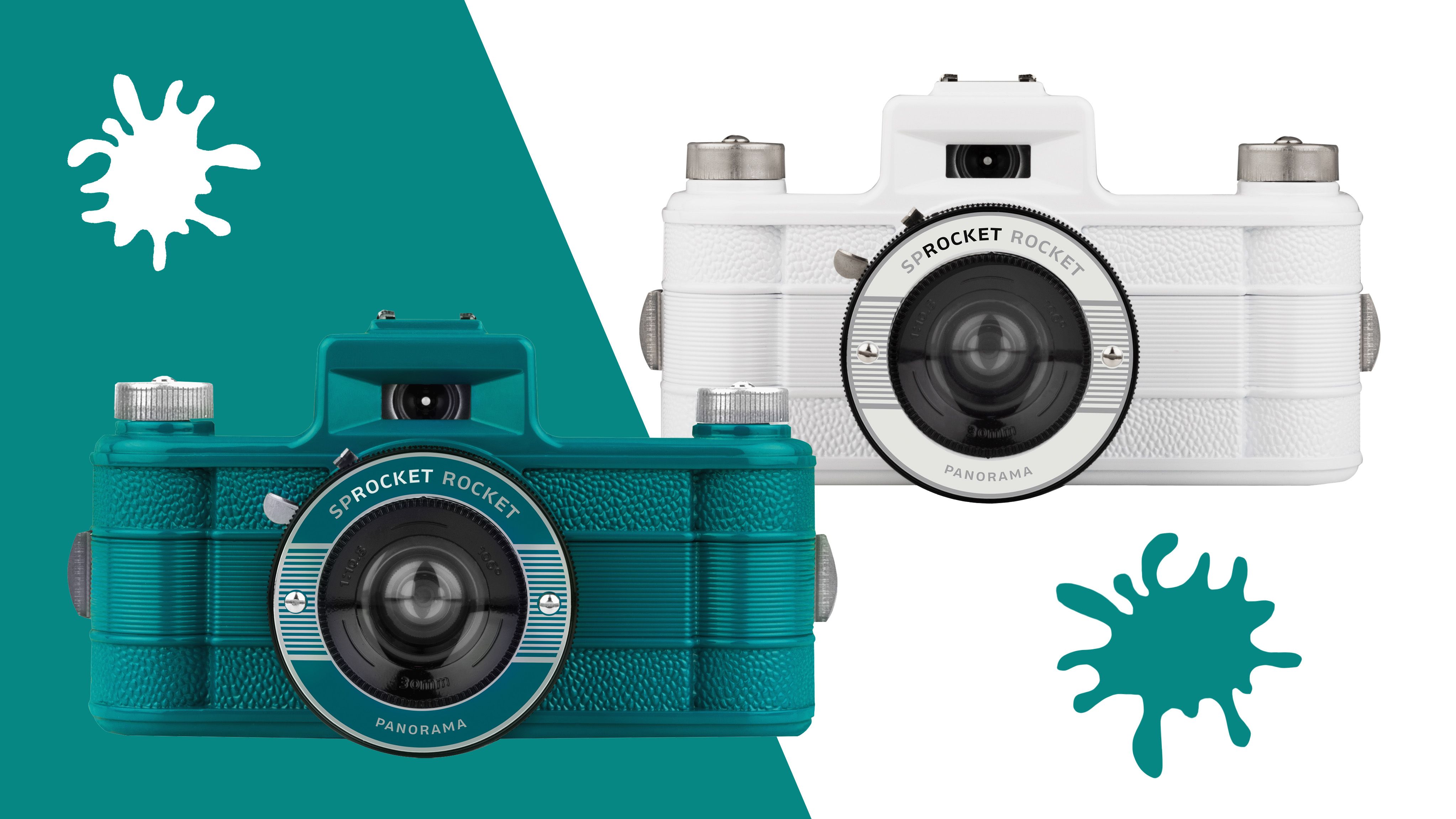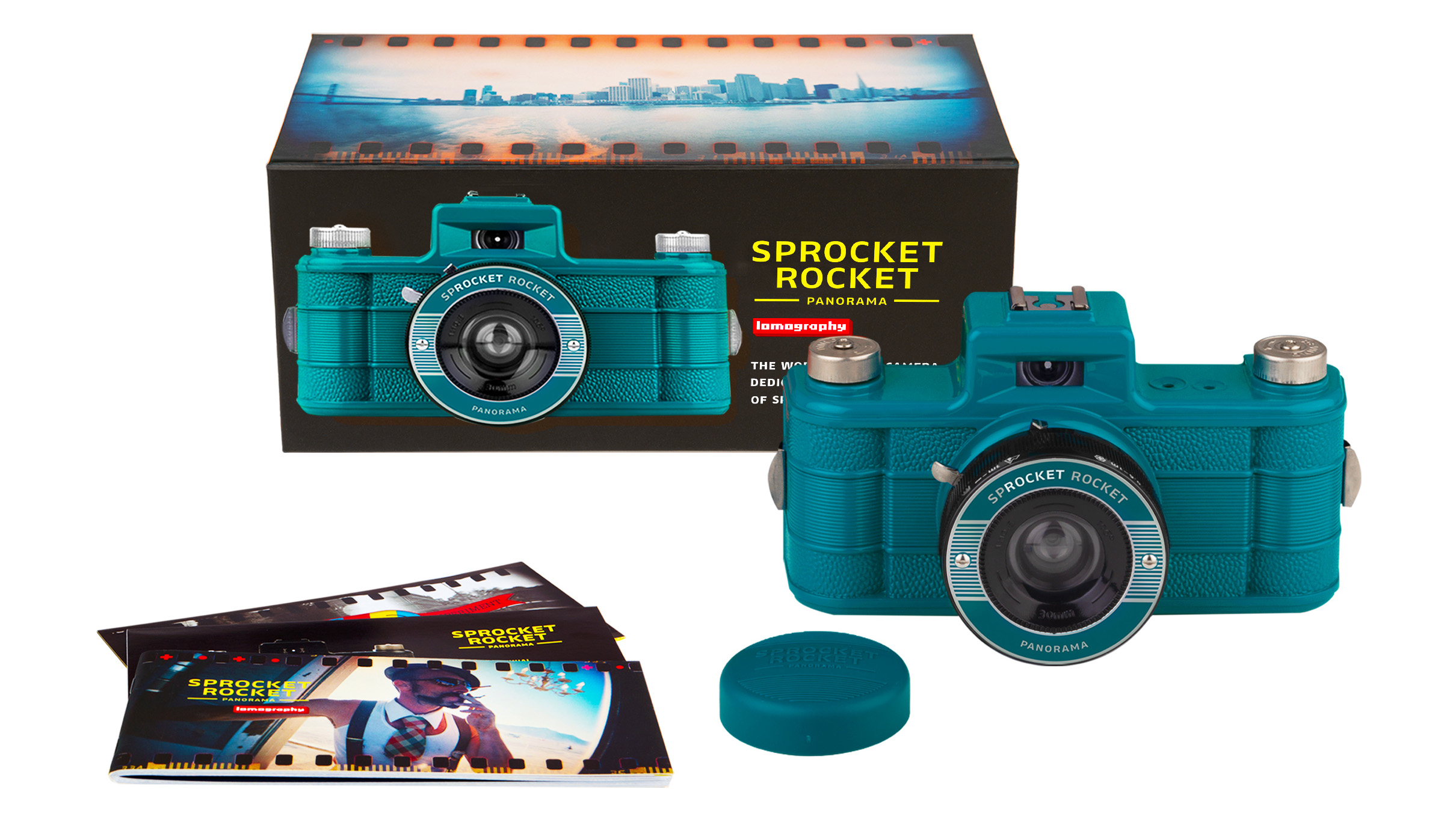Lomography Sprocket Rocket panoramic film camera looks as pretty as a peacock as two new colors launched
Lomography Sprocket Rocket 35mm Panoramic Camera debuts Coconut and Peacock hues, and they look pretty darn cool

Lomography has been busy cooking up new colorways for its Sprocket Rocket 35mm Panoramic Cameras. That’s right, the best Lomography cameras now look even more extra, thanks to the attractive-looking white and teal hues, Coconut and Peacock, respectively. These add to the existing trio of colors: black, Baja Blue and Bittersweet (a pale red).
The Austrian analog camera manufacturer says; “these cameras are dressed to impress and ready for bright, bold and boundary-pushing photography!” If you’re tempted by the allure of these vibrant-looking shades, they’re available now and are priced at $79 / £69.

What is the Lomography Sprocket Rocket?
The Sprocket Rocket 35mm Panoramic Camera was released back in 2011 as the world’s first panoramic wide-angle 35mm film camera dedicated to sprockets. What this means is that the device can take the best 35mm film (or any 35mm film for that matter) and deliver 1:3 panoramic images. It’s called the Sprocket Rocket because it will expose right to the edges of the film, right over the sprocket holes. Pretty neat.
The camera itself is about as simple as you can get, with few controls. Rewind and advance knobs are the only top-plate controls and there’s no shutter button. Instead, you fire the shutter by activating a small lever on the lens. Shutter speed and aperture are set via the lens, too. You can only shoot exposures at 1/100 sec or via bulb mode and can select apertures of just f/10.8 and f/16. Focusing is similarly simple, with two settings: 0.6-1m for closer subjects and 1m to infinity for everything else.
A hotshoe allows you to mount the best flashgun and the camera is able to shoot multiple exposures by simply refraining from advancing the film. Best of all, the Sprocket Rocket’s simple design doesn’t require a battery. It’s a purely mechanical device.
If you’re interested in film photography, check out the best light meters or the best film cameras.
Get the Digital Camera World Newsletter
The best camera deals, reviews, product advice, and unmissable photography news, direct to your inbox!

Mike is Digital Camera World's How To Editor. He has over a decade of experience, writing for some of the biggest specialist publications including Digital Camera, Digital Photographer and PhotoPlus: The Canon Magazine. Prior to DCW, Mike was Deputy Editor of N-Photo: The Nikon Magazine and Production Editor at Wex Photo Video, where he sharpened his skills in both the stills and videography spheres. While he's an avid motorsport photographer, his skills extend to every genre of photography – making him one of Digital Camera World's top tutors for techniques on cameras, lenses, tripods, filters and other imaging equipment – as well as sharing his expertise on shooting everything from portraits and landscapes to abstracts and architecture to wildlife and, yes, fast things going around race tracks...
